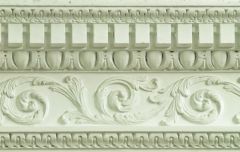
In the 18th century Scotland produced an astonishing array of philosophers, writers, and scientists, men who had a profound effect on the world, an effect that is felt even today. The economic theories of Adam Smith are still studied, and form the basis for many modern approaches to business. David Hume's writing formed the basis for the new science of psychology.
James Watt investigated the power of heat and invented the steam engine, which had a profound effect on the grown of industry.
Scotland became an important centre for publishing. Part of this publishing involved collecting old songs and poems before they were lost in the mists of time. A bookseller named Allan Ramsay established a lending library in 1728 to distribute some of these folklore materials. This was the first proper lending library in Scotland.
Ramsay's son, also named Allan, was one of the new breed of painters who created a market for Scottish landscape paintings. More famous was Sir George Raeburn, one of Scotland's best-known artists. But the artists were outdone by the architects. The most famous of Scottish architects were the Adam brothers, William and Robert. Robert Adam, in particular, transformed stately homes of the period, and even today many of the finest historic houses in Britain boast 'Adam interiors' in classical style. Adam worked on Edinburgh's 'New Town', an area of wide streets, elegant houses, and green spaces that transformed Edinburgh.


